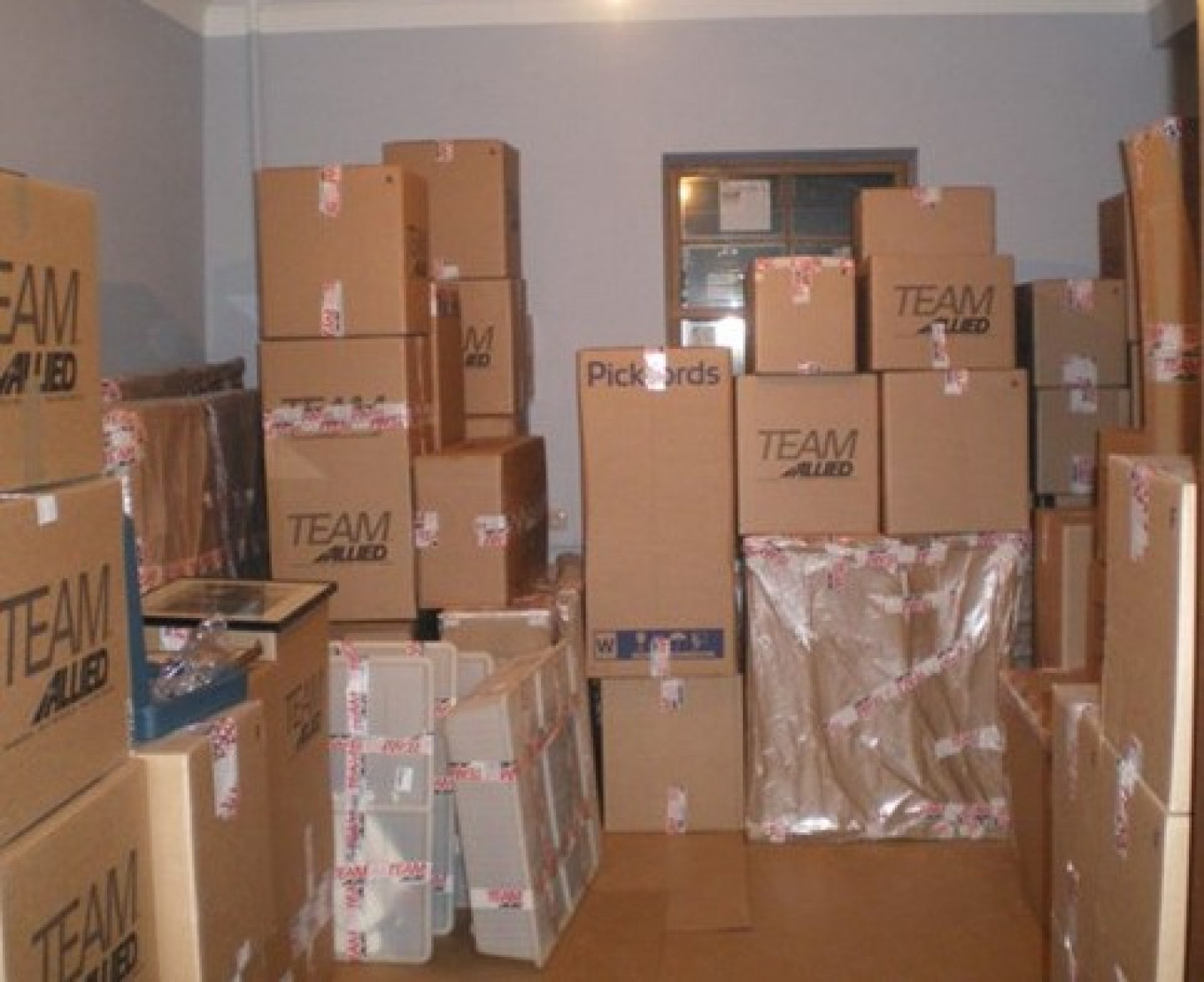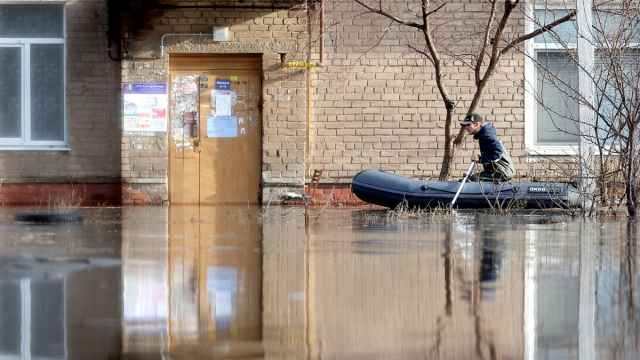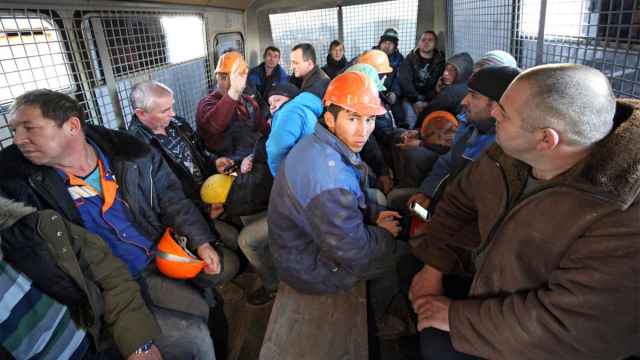Russian stance verbs – стоять (to stand), лежать (to lie), сидеть (to sit) and висеть (to hang) – are particularly problematic for English speakers.
At first glance, they don’t seem much different than their English equivalents. Стоять describes a vertical position, лежать – a horizontal position, and сидеть is a kind of in-between position. Some things stand and lie just like their English counterparts. If you lean a painting against a wall, you could say in Russian: Картина стоит у стены (the painting is standing up against the wall). But if you lay the painting down on a table, you could say: Картина лежит на столе (the painting is lying on the table). Books placed flat on a desk лежат (lie), while books placed upright on a shelf стоят (stand). Simple, right?
So what’s the problem?
The problem is when you are talking in Russian about inanimate objects or creatures other than humans and pets. In everyday English, we generally just use a form of “to be” to describe location and position: The plate is on the table. The boots were in the hall.
Once when I was getting ready for a party, my friend asked where the plates were. Since plates are flat, I answered: –Тарелки уже лежат на столе (The plates are already on the table). She made a rude noise. I asked what was so funny, and she explained, as if to a child, that in Russian, тарелки стоят (plates stand). It got worse. If little mice were standing on the table, I’d say: Мышки стоят (The mice are standing). More laughter. Мышки сидят (mice sit) even if they are standing. This sounds “logical” to Russian-speakers and totally “illogical” to non-native speakers of Russian.
When I began to look for rules to guide me, I discovered that grammar and textbooks were little help. Native speakers usually all agreed on what verb must be used, but they often couldn’t explain why. Linguists have only recently begun to plumb the mystery. While Russian language specialists more or less agree that there are some conceptual or perceptual underpinnings to the use of Russian stance verbs, they disagree on what they might be. And they admit that so far they haven’t been able to formulate rules to explain all of the usage.
To get a handle on this, I interviewed about twenty native Russian speakers in Moscow and sent queries to a listserv for translators. My informants ranged in age from about 20 to 60, were native to Moscow or other Russian cities, and represented a variety of educational and social levels. I found almost complete unanimity of usage and some recurring explanations for the logic underpinning the usage. Based on my informants’ comments and literature on the subject, I developed some preliminary theories about the logic of stance verbs and rules to help non-native speakers negotiate this difficult aspect of the Russian language.

What sits?
According to my informants, small scurrying creatures with legs that are barely visible are always said to sit when they stop moving. For example, ежи (hedgehogs), белки (squirrels), and мышки (mice) сидят, even if they are just frozen mid-dash across the yard, tree branch, or your picnic table. All insects and anything that flies – мухи (flies), бабочки (butterflies) and птицы (birds) – also “sit.” Паук сидит на подоконнике. (The spider is on the windowsill.) This is even true when the insect is splayed out horizontally: Гусеница сидит на листе. (The caterpillar is on the leaf.)
My informants told me that the verb лежать can be used with any of these creatures, but it conveys the notion of fatal immobility. Мышь лежала на столе might be translated as “a dead mouse was lying on the table.”
Other things that sit: roofs on houses, mushrooms on the ground, clothes on people, and pies in the oven. Крыша сидит криво на избе (the roof on the house is crooked): гриб сидит под берёзой (there’s a mushroom under the birch); платье хорошо сидит на ней (the dress fits her well); пирог сидит в печке (the pie is in the oven).
My informants noted that roofs “sit” on houses as an analogy for the way a hat sits on a person’s head. However, no one could explain why apparel “sits” on a person, although one thoughtful person suggested: Ну, одежда точно не может лежать или стоять на человеке, так что остается только – сидеть (Well, clothes definitely can’t lie or stand on a person, so the only that’s left for them is to sit.). Informants thought that a mushroom “sits” because its stem (called ножка – leg) can’t be seen, the way a hedgehog’s legs are barely visible. Other informants (under the age of 40) said they wouldn’t use сидеть in relation to a mushroom at all, but rather the verb расти (to grow).
Сидеть also seems to be used for things and people that are stuck or immobilized in some way, either against their will or due to circumstances beyond their control. For example, пробка крепко сидит в бутылке (the cork is really stuck tight in the bottle). Он сидит в тюрьме (he’s in prison); он сидит дома с детьми (he’s at home with the kids); я сижу в пробке (I’m stuck in traffic). Я сижу на диете (I’m on a diet).
What stands?
At the top of the list of objects that stand (стоят) are containers – anything designed to hold something. So ваза (a vase), тарелка (plate), шкатулка (box), миска (bowl) and таз (basin) стоят на столе (“stand” on the table). It doesn’t matter if the plate is flat or the jewelry box is longer than it is high. If they are positioned to carry out their containing duties – стоят (they stand).
Perhaps because туфли (shoes), ботинки (low boots), and сапоги (high boots) are conceptually containers – they “hold” feet, after all – they also stand. Где ботинки? Они стоят в коридоре. (Where are your boots? They’re in the hallway.)
Стоять can be thought of as the default verb for these objects. When they are ready for action – standing upright, ready to hold something – они стоят. But if they are not ready for action – if they are lying on their side, upside down, broken, or piled up willy-nilly – они лежат. Тарелка лежит на столе would mean that the plate is somehow oddly placed on the table. When I asked my native speaker informants what “тарелка лежит” would mean, they interpreted it to mean the plate was lying upside down, broken, or in a jumble of tableware after a party. Сапоги лежат на полу would mean: the boots are tipped over and lying on the floor.
Objects on display usually stand. Статуэтка мышки стоит на буфете (The mouse figurine is on the sideboard.)
In the animal kingdom, large creatures with visible legs stand. Лошадь стоит в поле. (A horse is standing in the field.) Рядом стоит корова. (A cow is standing next to it.)
When time, weather conditions or water stop moving, they “stand” in Russian. This is easy for English speakers to remember, since when time isn’t running out, it’s standing still, and if the water doesn’t run down your drain, you have a problem with standing water. В Москве стоит морозная погода (Moscow is having a patch of very cold weather.) В подвале постоянно стоит вода (There’s always standing water in my basement.) Слёзы стояли у нее в глазах (Tears were in her eyes.) Кажется, что время стоит на месте (It seems like time is standing still.)
None of my informants could explain why стоять was used in these cases. However, several cited the paradigm “идёт-стоит” (it goes-it stops). It’s possible that the usage of стоять with time, water and weather was once an expressive way of describing останавливать(ся) (to stop) that has now lost its original metaphorical sense.
What lies?
Hair lies on your head – that is, когда не стоят дыбом (when it’s not standing on end). Как заставить волосы лежать аккуратно? (How do you make your hair stay neatly in place?)
Money, when not changing hands or working for you, also lies. Деньги лежат в банке, на счёту, в кошелке, в ящике на кухне (The money is in the bank, in an account, in my wallet, in a drawer in the kitchen.)
Most food not in packages lies. That is, you might say соль стоит на полке (the salt is on the shelf) because it’s in a package or salt cellar. Or: кетчуп стоит около плиты (the ketchup is by the stove) because it’s in a container. But хлеб, овощи, и фрукты лежат на столе (bread, vegetables and fruit lie on the table).
It seems that the rule is: if something doesn’t have a base or an obvious top and bottom, it lies. Детские мячики лежат в углу. (The kids’ balls are in the corner.)
Therefore, shadows also lie, even if they are on the ceiling. Or perhaps like balls, they lie because they are thrown (отброшены)? In any case: В саду было тихо, прохладно, и тёмные тени лежали на земле. (It was quiet and cool in the garden, and dark shadows lay on the ground.)
People who are sick or injured lie in hospitals or at home, even if they are not bedridden. Он лежит в больнице со сломанной рукой. (He’s in the hospital with a broken arm.) Муж простудился, лежит дома. (My husband caught a cold and is taking a sick day at home.) Лежать adds information (the person is ill) and distinguishes their situation from сидеть дома с детьми (to stay at home with the kids).
When viewed from above or afar, elements of a landscape – however massive – often lie. Перед нами лежало море (The sea lay below us.) Even some tall structures on a high hill might lie in Russian, although in English they would stand: Небольшая крепость лежала на высоком и крутом берегу реки. (A small fort stood – literally “lay” – on a high and steep river bank.)
And if something isn’t being used, isn’t working, or is in storage – it lies. It doesn’t matter if the thing is placed horizontally, vertically or any which way. Лежат дома косметические спонжики, но пользоваться ими мне неудобно. (I’ve got cosmetic sponges lying around at home, but I find them hard to use.) Зимой наши велосипеды лежат в сарае (In the winter we put away our bicycles in the shed.)

Boxes (коробки) are tricky. Most of the time they seem to lie: Коробка спичек лежит на столе. (The matchbox is on the table.) But when they are placed upright (on the short side) or on top of one another, Russian speakers say that they stand. When I showed native Russian speakers a photo of my apartment after the movers had come, they described the scene this way: Коробки стояли почти до потолка (The boxes were piled up nearly to the ceiling.)
What hangs?
In Russian, lots of things hang or hang around. Anything suspended in the air is said to hang, especially things that provide light: Лампа висит над столом (A lamp hangs over the table). Луна висела над собором (The moon hung above the cathedral.)
Things attached to walls also hang, no matter how big or how heavy: Ещё Чехов писал, что если на стене висит ружьё, во время спектакля оно обязательно должно выстрелить (It was Chekhov who wrote that if a gun hangs on the wall, then during the play it absolutely must go off.) Над кроватью висел тяжёлый ковёр (A heavy rug was hanging on the wall above the bed.) Even shelves hang: Полка, которая висит на стене, называется настенная полка (A shelf that is attached to the wall is called a wall shelf.)
Sometimes the hanging things stick out or hang over: На стене над ней висел металлический шкафчик (A metal cupboard on the wall loomed over her.)
Locks hang, too. На всех дверях висят замки (All the doors are padlocked.)
You also use висеть for things that hover in the air: Вертолёт висел над посадочной площадкой (The helicopter hovered over the landing pad.) Things hover figuratively, too, but for some reason, mostly bad things hang over people or in the air between them: В воздухе висело слово, которое все так боялись произнести. (The word that everyone was so afraid to say out loud hung in the air.) Напряжение висело между ними (There was tension between them.) Над нами его решение висело как дамоклов меч (His decision hung over us like the sword of Damocles). На мне еще долг висит (I’ve still got a debt hanging over me.) Threats hang: Угроза терроризма висит над всем регионом (The threat of terrorism hangs over the entire region.) And sounds, too: Висели над улицей громкие крики (Loud screams could be heard over the street.)
Clothes can hang in three different ways. They can hang on a hook or hanger: Платье висит в гардеробе (My dress is hanging in the closet.) Part of them can hang down: Платье странно висит сзади (The dress sags strangely in back.) And they can hang on a person, either because they are too big or simply unflattering: Она так резко похудела, что платье просто висит на ней (She lost so much weight that the dress just hangs on her.) Платье висит на тебе как мешок – не идёт. (The dress just hangs on you like a sack – it doesn’t suit you at all.)
And things can hang in two ways around your neck. One is nice: На шее у неё висел амулет из бриллиантов и сапфиров (She wore an amulet of diamonds and sapphires around her neck.) The other is a burden: На шее у него висят студенческие долги (He’s got student loans weighing him down.) In English, burdens are often on another part of the body: Куда мои родственники пойдут! Повиснут у меня на шее! (Where are my relatives going to go? I’ll never get them off my back.)
When you have burdens like this, you need to vent to a friend. That involves some hanging, too: Мы весь вечер висели на телефоне (We talked on the phone – literally “hung from the phone” – all evening.)
How Did it Get There?
The final difficult part of this for English speakers is the verb you use to place something. In Russian, the verb you use to put someone or something somewhere depends largely on the position you put that someone or something in. If you are putting them into a horizontal position, you use the verb pair класть/положить. If you are putting them into a vertical position, you use the verb pair ставить/поставить.
And if something lies (лежит) – that is, the object requires the verb лежать to describe its resting position – you use класть/положить to put it there; if something stands (стоит) – that is, the object requires the verb стоять to describe its resting position – you use ставить/поставить. So: Мы положили бабушку в больницу. (We put my grandmother in the hospital.) Положи хлеб на стол. (Put the bread on the table.) Она решила положить деньги в банк под большие проценты. (She decided to put her money in a high-interest bank account.)
You also use класть/положить when putting food on plates, since it lies there (лежит). Положить тебе грибы? (Shall I serve you some mushrooms?) This usage seems to have been generalized to include соль (salt), сахар (sugar), специи (spices). В суп я всегда кладу лавровый лист. (I always put a bay leaf in the soup.)
In the kitchen, the fridge is controversial territory. Some people say that they always use класть/положить when putting food in both the fridge (холодильник) and freezer (морозилка). Others distinguish between a bottle standing upright and a bag of potatoes plopped on the shelf. Поставь вино в холодильник. (Put the wine in the fridge.) Я положила пельмени в морозилку (I put the pelmeni in the freezer.)
When Russian speakers describe placing objects that stand (стоит) anywhere but in the fridge, they use ставить/поставить: Поставь поднос на стол. (Put the tray on the table.) Я поставила бутылку на буфет (I put the bottle on the sideboard.)
Placing people or animals in a standing position also uses ставить/поставить: Пастух поставил лошадей в конюшню (The shepherd put the horses in the stable.)
An unexplained usage is ставить/поставить to place something for a medicinal effect. Sо you use ставить with банки (jars), горчичник (mustard plaster), термометр (thermometer) and even пиявки (leeches), even though they lie – or wiggle.
For things that hang, it’s logical. In most cases you simply use весить/повесить (to hang). There are plenty of upbeat how-to articles about this: Как повесить полку на стену? Очень легко! (How do you install a hanging shelf? Easy!) But if you have one of those walls that are first impossible to drill and then dissolve into powder: Повесить полку? Вызвать мастера на час! (Need to put up a wall shelf? Call a specialist “by the hour.”)
Unanswered Questions
Usage of stance verbs in Russian seems to be acquired by native speakers at an early age. One informant noted that her eight-year-old daughter, who grew up abroad and only spoke Russian at home, used verbs exactly like her parents did – even with animate and inanimate objects she had never described before. There appears to be some internal logic that has not yet been fully described. Discovering that logic – that internal picture of the way objects and creatures are immobile in Russian – would make it possible to develop a more complete and cogent set of usage rules for non-native speakers.






